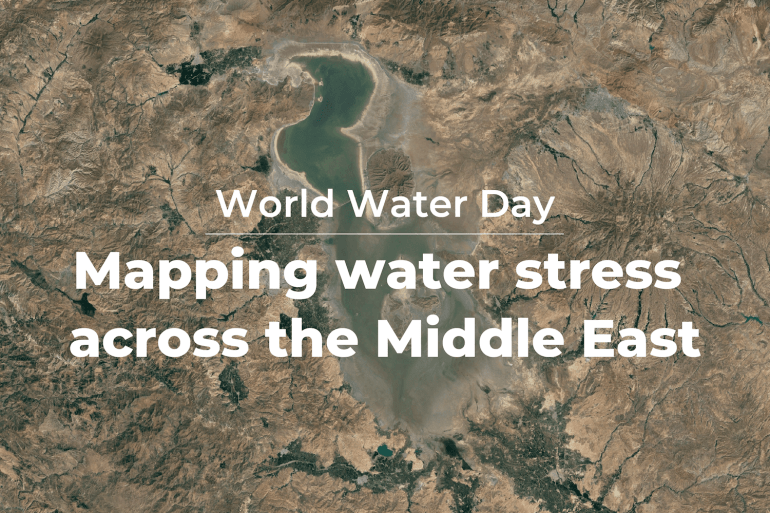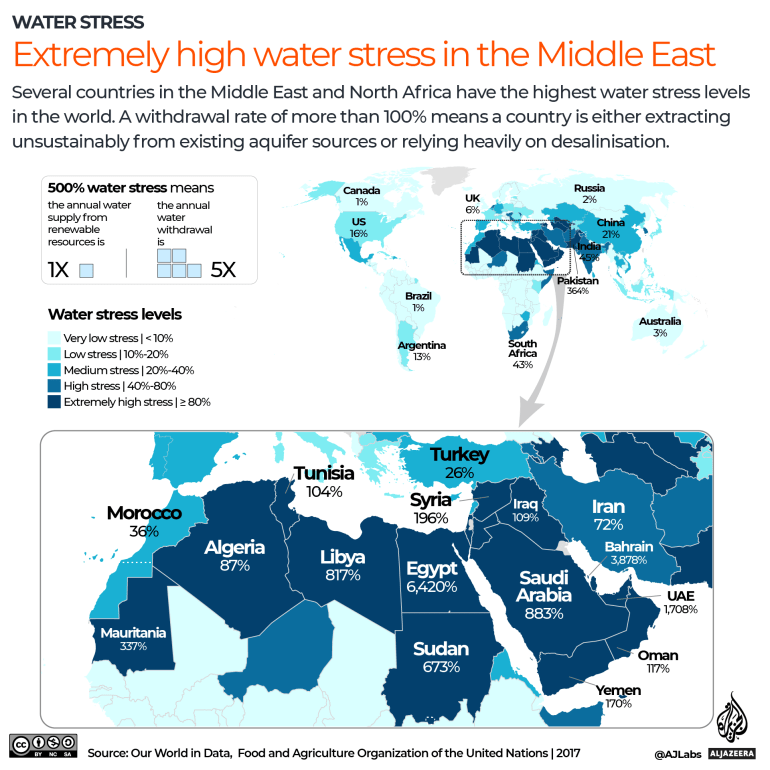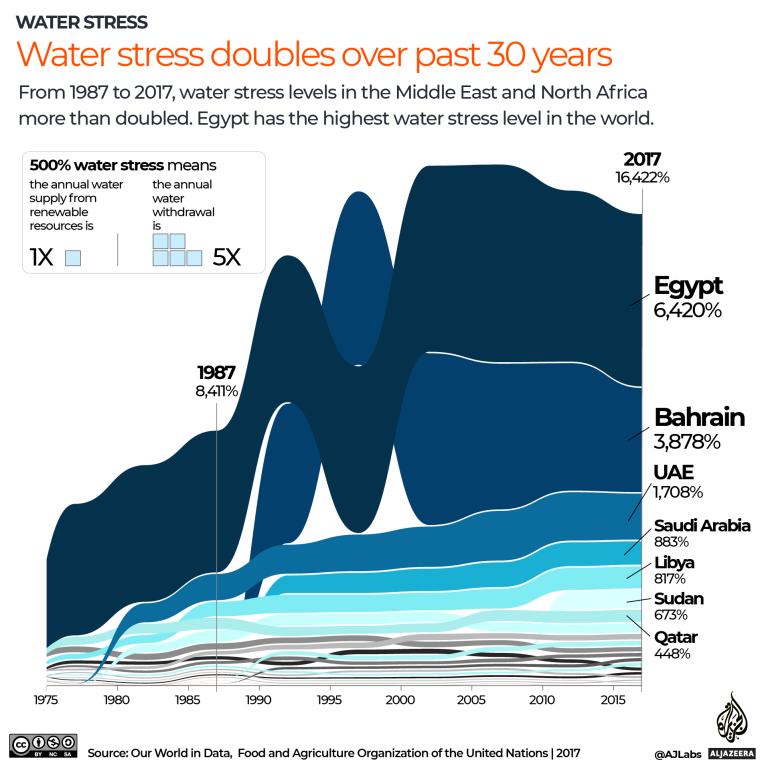Seven out of the 10 most water-stressed nations are in the Middle East and North Africa. The timelapse videos below show some lakes have all but disappeared.

By AJLabs
Published On 22 Mar 202322 Mar 2023
The United Nations designates March 22 as World Water Day, with the aim of measuring the world’s progress towards providing everyone with clean, accessible and affordable water.
According to UN-Water, 2.3 billion people, or one in four of the world’s population, live in water-stressed countries.
Water stress refers to the proportion of freshwater usage compared with renewable freshwater sources. When water withdrawals surpass available resources, a country is either depleting its aquifers faster than they can be replenished or has significantly high levels of desalination water production.
Water stress in the Middle East
Seven out of the 10 most water-stressed nations are in the Middle East and North Africa. In those countries, the average water stress level is 820 percent, which means that the annual water withdrawal is eight times higher than the water supply from renewable resources.
The Middle East has a predominantly dry and arid climate with low rainfall and high temperatures. To provide their residents with enough water, several countries in the region, particularly in the Gulf, rely on desalination, a process that removes salt from seawater.
As of 2017, the countries with the highest water stress levels were: Egypt (6,420 percent), Bahrain (3,878 percent) and the United Arab Emirates (1,708 percent).

Water stress doubles over past 30 years
From 1987 to 2017, water stress levels across the Middle East and North Africa more than doubled from 8,411 percent in 1987 to 16,422 percent in 2017.
In Egypt, water stress levels have increased from 4,897 percent in 1977 to 6,420 percent in 2017.
The country with a population of more than 100 million people relies heavily on the waters of the Nile River, which originates outside its borders. According to a 2021 UNICEF report, Egypt is facing an annual water deficit of about 7 billion cubic metres (247 billion cubic feet) and the country could run out of water by 2025.

Disappearing lakes
Rising temperatures, an increased demand for water and the construction of dams have led to several lakes shrinking across the Middle East. Two notable disappearing lakes are Lake Urmia in Iran and Lake Sawa in neighbouring Iraq.
Lake Urmia, Iran
Lake Urmia was once the largest lake in the Middle East and the sixth-largest saltwater lake on Earth. It is located in northwestern Iran and has now all but dried up to become a salt plain.
The timelapse video below shows how much the lake has evaporated since the 1980s.
https://flo.uri.sh/story/1863516/embed
Lake Sawa, Iraq
Lake Sawa has now completely dried up after consecutive years of severe drought. Rising temperatures and a drastic decrease in the water levels of the Tigris and Euphrates rivers have caused extreme droughts across the county of 43 million people.
The timelapse video below shows how much the lake has evaporated since 2011.
https://flo.uri.sh/story/1863521/embed
https://www.aljazeera.com/news/2023/3/22/world-water-day-mapping-water-stress-across-the-middle-east
